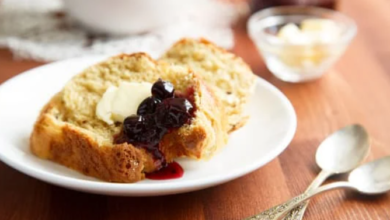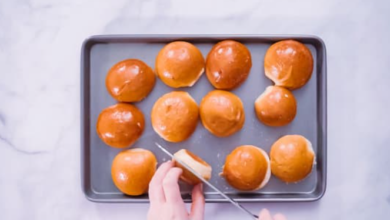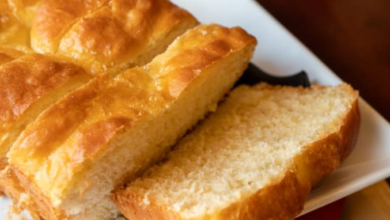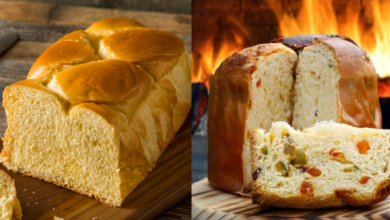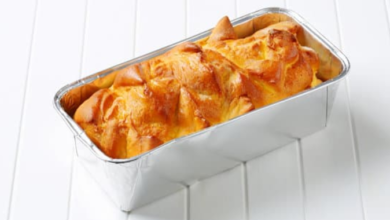How Do You Know When Brioche Dough is Fully Kneaded?

What To Know
- If the dough stretches into a thin, translucent membrane without tearing, it is a testament to its optimal kneading.
- For larger quantities of dough, a stand mixer fitted with a dough hook can alleviate the physical effort of kneading.
- If the dough becomes too firm and elastic, stop kneading immediately and let it rest for a few minutes to relax the gluten network.
Brioche, an ethereal pastry renowned for its rich, buttery flavor and pillowy texture, requires meticulous kneading to achieve its culinary perfection. However, determining the optimal kneading time can be a daunting task for even seasoned bakers. This comprehensive guide will empower you with the knowledge to master the art of brioche dough kneading, ensuring that your pastries reach their full potential.
Signs of Perfectly Kneaded Brioche Dough
1. Elasticity and Suppleness: Well-kneaded brioche dough should exhibit remarkable elasticity and suppleness. When stretched, it should snap back into its original shape without tearing. This elasticity is crucial for creating the signature airy crumb of brioche.
2. Smooth and Uniform Surface: A properly kneaded dough will have a smooth and uniform surface, free from any lumps or irregularities. The dough should feel soft and slightly tacky to the touch, but not sticky.
3. Windowpane Test: The windowpane test is the definitive method to assess the kneading progress of brioche dough. Take a small piece of dough and stretch it between your fingers. If the dough stretches into a thin, translucent membrane without tearing, it is a testament to its optimal kneading.
4. Increased Strength: Kneading develops the gluten network within brioche dough, enhancing its strength and resilience. Well-kneaded dough will hold its shape when molded and will not collapse or spread excessively during baking.
5. Temperature: The temperature of the dough is a critical factor in kneading. Brioche dough should be kneaded at a temperature between 75-80°F (24-27°C). Kneading at higher temperatures can weaken the gluten network, while lower temperatures can make the dough stiff and difficult to work with.
Techniques for Kneading Brioche Dough
1. Hand Kneading: Traditional hand kneading is a time-honored method that allows for precise control over the dough’s development. It involves repeatedly folding, pressing, and stretching the dough on a lightly floured surface.
2. Stand Mixer: For larger quantities of dough, a stand mixer fitted with a dough hook can alleviate the physical effort of kneading. However, it is essential to use the lowest speed setting and knead for shorter intervals to prevent overworking the dough.
3. Bread Machine: Bread machines offer a convenient and hands-off approach to kneading brioche dough. Simply add the ingredients to the machine and select the “dough” cycle. However, it is important to note that bread machines may not always achieve the same level of kneading as manual methods.
Common Pitfalls and Troubleshooting
1. Overkneading: Overkneading can result in a tough, chewy brioche with a dense crumb. If the dough becomes too firm and elastic, stop kneading immediately and let it rest for a few minutes to relax the gluten network.
2. Underkneading: Underkneaded dough will lack the necessary strength and elasticity to rise properly. The crumb may be coarse and crumbly, and the pastry may collapse during baking.
3. Uneven Kneading: Ensure that the dough is kneaded evenly throughout. If one part of the dough is overkneaded while another part is underkneaded, the final product will have an uneven texture.
Takeaways: The Art of Brioche Kneading
Mastering the art of brioche dough kneading is an essential skill for any baker aspiring to create exceptional pastries. By understanding the signs of optimal kneading, employing the appropriate techniques, and avoiding common pitfalls, you can unlock the secrets of perfectly kneaded brioche dough that will elevate your culinary creations to new heights.
Frequently Asked Questions
Q: How long should I knead brioche dough?
A: The kneading time can vary depending on the method used, but generally, it takes around 10-15 minutes by hand or 5-7 minutes with a stand mixer.
Q: Can I use a bread machine to knead brioche dough?
A: Yes, you can use a bread machine, but be sure to select the “dough” cycle and check the dough periodically to ensure it is not overkneaded.
Q: What happens if I overknead brioche dough?
A: Overkneading can result in a tough, chewy brioche with a dense crumb. Let the dough rest for a few minutes to relax the gluten network.
